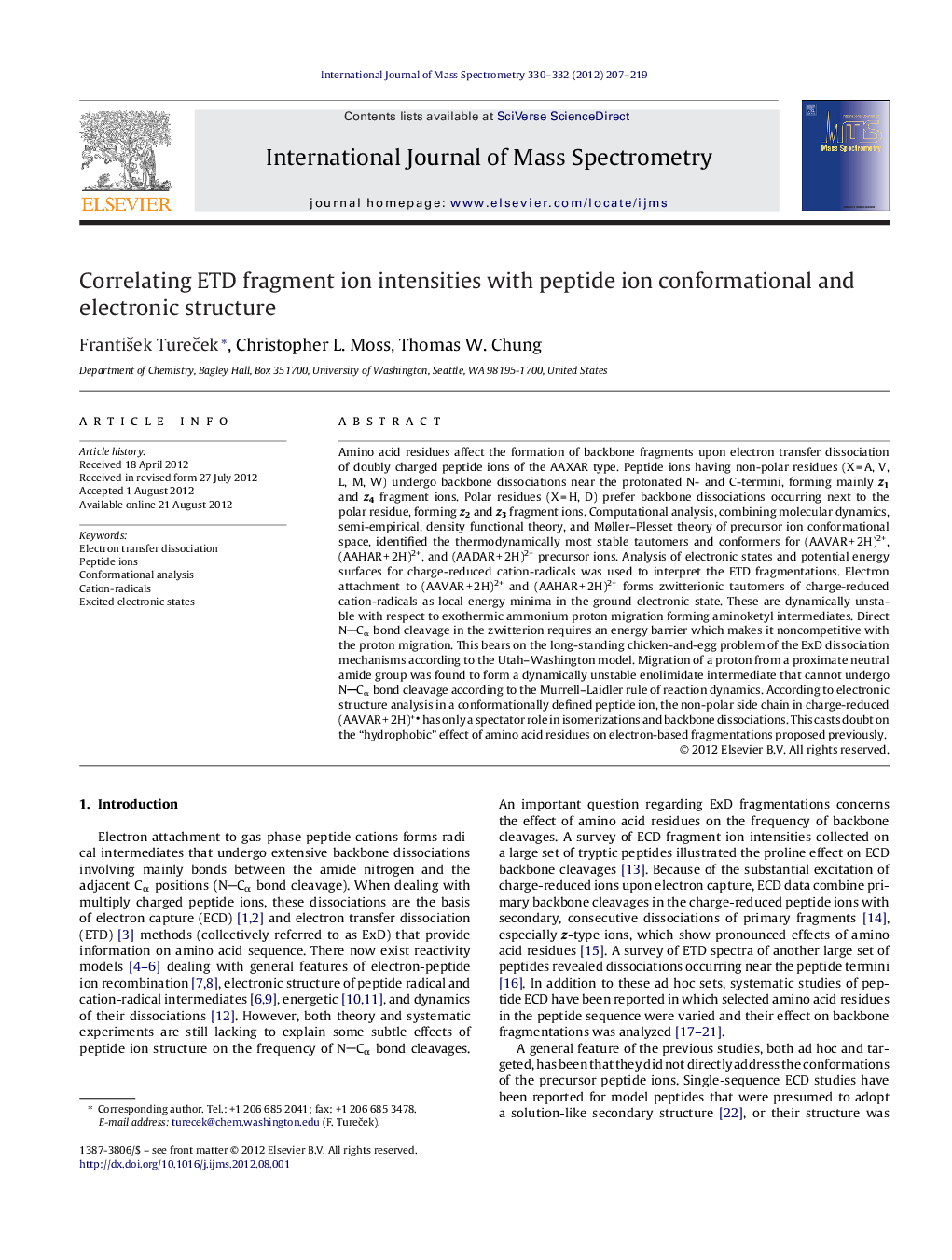| Article ID | Journal | Published Year | Pages | File Type |
|---|---|---|---|---|
| 1194247 | International Journal of Mass Spectrometry | 2012 | 13 Pages |
Amino acid residues affect the formation of backbone fragments upon electron transfer dissociation of doubly charged peptide ions of the AAXAR type. Peptide ions having non-polar residues (X = A, V, L, M, W) undergo backbone dissociations near the protonated N- and C-termini, forming mainly z1 and z4 fragment ions. Polar residues (X = H, D) prefer backbone dissociations occurring next to the polar residue, forming z2 and z3 fragment ions. Computational analysis, combining molecular dynamics, semi-empirical, density functional theory, and Møller–Plesset theory of precursor ion conformational space, identified the thermodynamically most stable tautomers and conformers for (AAVAR + 2H)2+, (AAHAR + 2H)2+, and (AADAR + 2H)2+ precursor ions. Analysis of electronic states and potential energy surfaces for charge-reduced cation-radicals was used to interpret the ETD fragmentations. Electron attachment to (AAVAR + 2H)2+ and (AAHAR + 2H)2+ forms zwitterionic tautomers of charge-reduced cation-radicals as local energy minima in the ground electronic state. These are dynamically unstable with respect to exothermic ammonium proton migration forming aminoketyl intermediates. Direct NCα bond cleavage in the zwitterion requires an energy barrier which makes it noncompetitive with the proton migration. This bears on the long-standing chicken-and-egg problem of the ExD dissociation mechanisms according to the Utah–Washington model. Migration of a proton from a proximate neutral amide group was found to form a dynamically unstable enolimidate intermediate that cannot undergo NCα bond cleavage according to the Murrell–Laidler rule of reaction dynamics. According to electronic structure analysis in a conformationally defined peptide ion, the non-polar side chain in charge-reduced (AAVAR + 2H)+ has only a spectator role in isomerizations and backbone dissociations. This casts doubt on the “hydrophobic” effect of amino acid residues on electron-based fragmentations proposed previously.
Graphical abstract.Figure optionsDownload full-size imageDownload high-quality image (157 K)Download as PowerPoint slideHighlights► We identified most stable conformers of gas-phase (AAXAR + 2H)2+ peptide ions. ► Electron attachment to (AAXAR + 2H)2+ forms zwitterionic cation-radicals. ► Backbone cleavage occurs near the protonated (Arg) or polar (His, Asp) residues. ► Proton migration from neutral amide groups is disfavored. ► The chicken-and-egg problem of the ExD dissociation mechanism is addressed.
